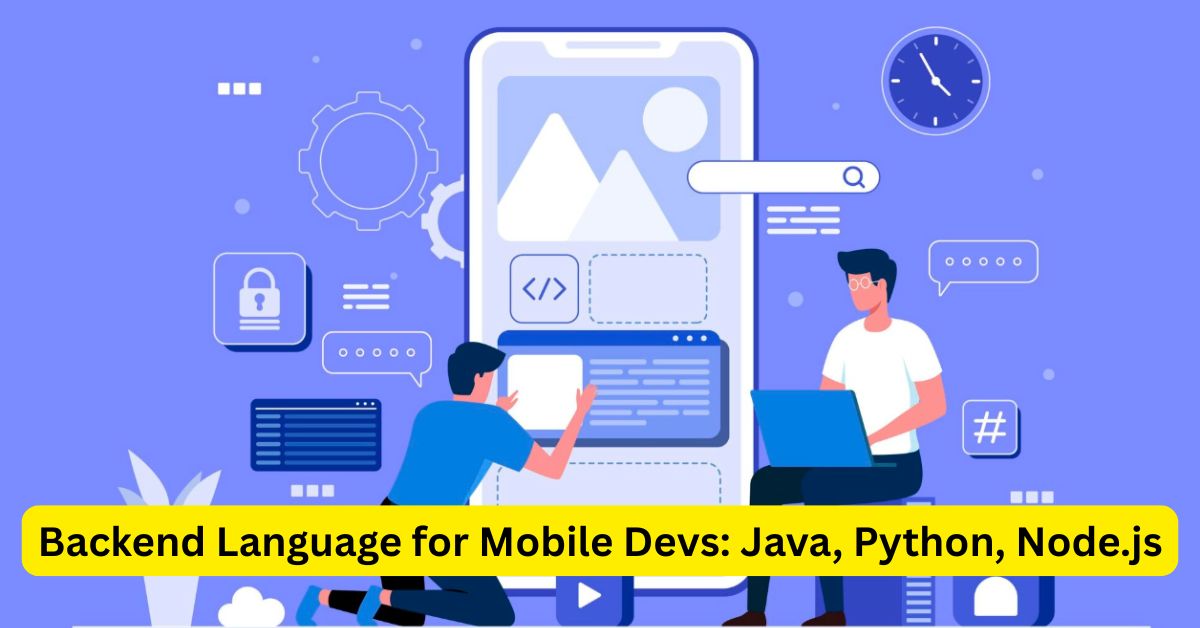So, you’ve mastered Android development and now you’re ready to level up your career. The dream: becoming a full-stack mobile developer capable of launching your own apps and, better yet, offering high-value freelance services.
But now you face the classic developer dilemma: Which backend language should you choose?
Java, Go, JavaScript/Node.js, Python, Kotlin… the list is overwhelming.
Let’s break down this question and concentrate on three core aspects ranging from must have to preferred:
- Job & Freelance Opportunities (The “Must”)
- Cross-Platform/Web Versatility (The “Nice to Have”)
- Beginner Friendliness & Speed (The “Preferred”)
The Three Top Backend Contenders
Based on market size and frequency in job postings, three languages repeatedly emerged as the most practical choices for high job prospects, especially in freelance markets.
1. Java (and Kotlin): The JVM Bridge
If you’re coming from Native Android development, Java (and its modern sibling, Kotlin) is your path of least resistance.
- The Pro: You already understand the JVM (Java Virtual Machine). The community noted that transitioning to Kotlin for the backend is incredibly fast, sometimes taking just a couple of weeks. Java remains a massive, reliable force in the enterprise backend world, offering market stability.
- The Con: It can sometimes feel more verbose or take longer to set up than others.
- Verdict: The best choice for fast entry if you value stability and want to leverage your existing Android ecosystem knowledge.
2. JavaScript (Node.js): The Full-Stack Powerhouse
Node.js (running JavaScript or TypeScript on the backend) is the most versatile option on this list.
- The Pro: It allows you to use a single language for the entire stack—mobile frontend, web frontend, and backend. Comments noted that Node.js is “almost everywhere,” particularly in companies looking for fast, scalable solutions. It’s excellent for serving your mobile and web frontends efficiently.
- The Con: The asynchronous nature of Node.js can sometimes be a hurdle for beginners, and for massive, computation-heavy tasks, it might not be the fastest.
- Verdict: Ideal for the developer prioritizing true full-stack capability and high demand across the entire tech landscape.
3. Python: The Rising Star
Python’s growth has been explosive, driven by its simple syntax and immense power in emerging fields.
- The Pro: It is incredibly beginner-friendly, with a short learning curve. Python is dominating the fields of AI, machine learning, and data engineering. As a backend language (using frameworks like Django or Flask), it is widely cited as one of the most common languages in US/European job markets.
- The Con: While excellent, its primary domain isn’t often mobile-centric backend services, though it works perfectly well.
- Verdict: A fantastic choice if you want to keep your options open for data-related roles while still securing stable backend work.
The Universal Truth: Concepts Over Code
Here’s the most crucial piece of advice: The language is not the bottleneck.
Before you obsess over Java vs. Node.js, you must learn the universal concepts of backend development. This includes understanding:
- How REST and GraphQL APIs work.
- Database design and querying.
- Middleware and request handling.
Once you truly grasp these fundamentals, you can migrate between Java, Python, and Node.js with relative ease. The hard work is in the architecture, not the syntax.
Making the Choice
When deciding between Java, Node.js, and Python, consider the following factors:
- Project Requirements: Assess the specific needs of your project. For instance, if you’re building a real-time application, Node.js might be the best fit. For enterprise-level applications, Java could be more appropriate.
- Existing Skills: Leverage your current expertise. If you’re already proficient in JavaScript, transitioning to Node.js might be smoother.
- Community and Resources: Consider the availability of libraries, frameworks, and community support for each language.
| Feature / Factor | Java | Node.js | Python |
|---|---|---|---|
| Performance | High; ideal for large-scale apps | High for I/O-bound tasks; not CPU-heavy | Moderate; slower for CPU-intensive apps |
| Learning Curve | Steeper; verbose syntax | Moderate; JavaScript familiarity helps | Gentle; very readable syntax |
| Development Speed | Slower; more boilerplate | Fast; asynchronous coding | Fast; frameworks like Django/Flask help |
| Scalability | Excellent; proven for enterprise apps | Good; handles many concurrent users | Moderate; can scale but needs careful setup |
| Ecosystem / Libraries | Mature; rich ecosystem, lots of tools | Very large; npm is extensive | Large; strong in web, data, AI |
| Concurrency | Multi-threading support | Event-driven, single-threaded | GIL limits true multi-threading |
| Best Use Case | Enterprise apps, Android backend | Real-time apps, APIs, startups | Rapid prototyping, web apps, AI integration |
| Community / Support | Large; well-established | Large; modern and active | Large; strong documentation & tutorials |
| Freelancer-Friendly | Moderate; projects often long-term | High; many small to medium gigs | High; quick projects and prototyping-friendly |
| Ease of Finding Jobs | Moderate; enterprise-focused roles | High; strong demand for JavaScript devs | High; web apps, automation, and AI gigs available |
Final Thoughts: Your #1 Actionable Step
The number one recommendation is to stop asking and start looking. Your job prospects are highly dependent on your region. As a full-stack mobile developer, your choice should align with your project requirements, existing skill set, and the specific challenges you aim to address.
Action: Spend a few hours on local job boards (LinkedIn, Indeed, etc.) filtering for “Backend Developer” or “Freelance API Developer” in your target city or service region. Which language appears most often?
This simple market research will give you a definitive, local answer, ensuring your time is invested in the language that will pay off for your full-stack mobile freelancer dream.
Further Reading: Exploring No-Code: Essential Insights for Non-Developers
Discover more from TACETRA
Subscribe to get the latest posts sent to your email.
